|
|
| 'Like' us on Facebook | Follow us: |
Posted on: Sept 26, 2013
THE ROAD AHEAD FOR RADIO SAI
And How You Can Join Us
The Promised Follow-up To My Recent Musings Talk
Prof. G. Venkataraman
Loving Sai Ram and greetings from Prasanthi Nilayam.
What follows is the article I promised in my recent Musings Talk, in which I briefly touched upon the change of gear we expect to make, here in Radio Sai. Before I do anything else, I apologize for the length of this article. Please bear with me, and try to go through the whole of it. Hopefully you would then get a clear idea of what we aim to do, and then decide how you would like to help us in spreading Swami’s Message.
The Treasure Trove at Radio Sai
In my Musings talk, I referred to the fact that we have about 1000 plus recordings of various Discourses. This is besides the Vahinis, a sizeable collection of letters written by Swami at various times, films, videos, recalls, and the countless books on Bhagawan. All these would form the ‘database’ we intend to draw upon, for preparing radio programs, audio and video documentaries, special features, e-books, etc.
 |
In passing, I would like to mention that by Swami’s Grace a state-of-the-art archive building is coming up. In fact, while in America I picked up much valuable information about the preservation and database aspects, by visiting various archives. This included the famous National Archive in Washington D.C., where the originals of the Declaration of Rights and the Constitution are preserved.
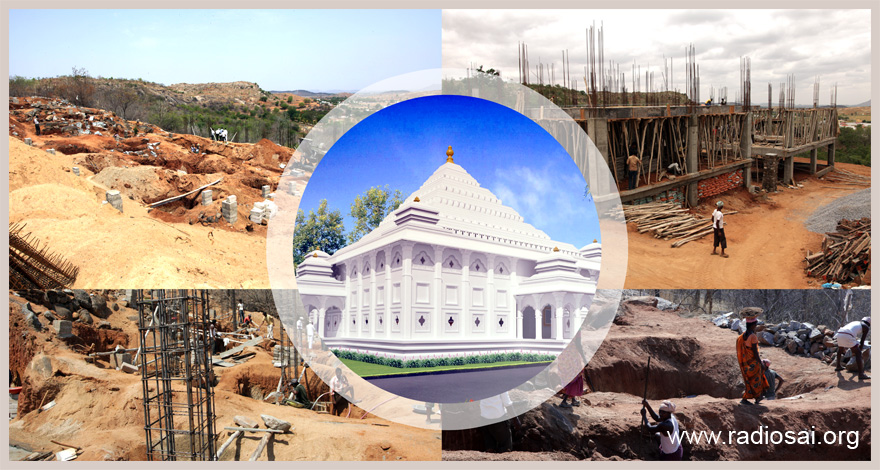 |
| An artist's impression of the upcoming archival building (center) and the construction work in progress |
Getting back to what we intend to do with the ‘Sai Treasure’ we have as our resource base, the key point, as I stressed in my Musings talk, is that Swami’s Teachings and Message represent Eternal Wisdom. Their usefulness thus goes far beyond general public interest as well as scholarly curiosity, which is to be expected since these teachings have been given by God come in human form, for the benefit of the whole of humanity and for all times.
In this context, we would do well to remind ourselves that Swami’s teachings belong to the same category as the Bhagavad Gita with, however, one critical difference. Whereas in the Gita the Divine Message is compressed into 700 slokas (or hymns) Swami, over six decades unpacked the Gita so that the teachings become accessible to people at all levels, from children to adults, from farmers to businessmen, indeed to people in all walks of life including artists, doctors, managers, politicians, statesmen, etc.
The Mission of Radio Sai
This fact is hardly appreciated, and for that reason our work would start precisely from this point. In other words, our aim is to make the Teachings and the Message accessible to as many people as possible, in as many age groups as possible, and in as many categories as possible. And we would try to achieve this widespread and global reach-out by adapting, tailoring and ‘packaging’ the Message in manners both interesting and relevant to today’s world. That clearly is a Himalayan challenge, and it is for meeting that challenge we seek your help.
Allow me to pause for a moment and offer some reflections on this last observation. Now the Gita has been around for thousands of years and innumerable commentaries have been written on it. The Gita has also been translated into any number of languages. The Gita is thus widely known, and scholars continue to deliver talks and sermons on its teachings. However, most of these talks offer at best detailed explanations and annotations of what Krishna said. Swami also spoke on what was contained in the Gita, but how amazingly and refreshingly different His Discourses were!
 |
By way of highlighting that difference, I wish to call attention to what Prof. Jeffry Sachs, an eminent economist at the Columbia University said some years ago, while delivering the prestigious BBC Reith Lectures. Prof. Sachs noted that the top three critical problems facing humanity at this juncture are:
1. the threat of terrorism, widespread conflict and even war,
2. climate change, and
3. mass poverty
Maybe your list of critical problems would be somewhat different. But be that as it may, the fact that is all the seemingly intractable problems faced by humanity are nothing but problems created by the human mind. It does not take rocket science to figure that out.
Now the human mind is extra-ordinarily powerful and can (with due effort) solve extremely complex problems, provided they have not been created by the mind. Thus it is that humans have eradicated small pox, placed a remarkable laboratory named Curiosity Rover on Mars which is about 20 to 30 million miles away, and successfully detected the Higgs boson, often referred to as the God particle; the list goes on. Lord Krishna has reminded us that the mind is able to do amazing things because of the enormous power God has endowed it with.
The question now becomes: “Well, if the mind is so very powerful, how come it is unable to deal with the problems Jeff Sachs has identified?” Swami has explained that, and in a most unambiguous manner. Not merely that; Swami has also indicated how seemingly insoluble problems can actually be solved.
The question now becomes: “If the solution to intractable problems is latent in the teachings of Krishna and Swami, then how come hardly anyone in this country is drawing attention to these solutions at a time when we seem to be overwhelmed with so many problems, including the oft-mentioned corruption problem and the rape-culture problem that make the headline every other day?”
A Lesson from the Life of Vinoba Bhave
The point I am making is simple but non-trivial, and by way of amplifying it let me draw attention to what Acharya Vinoba Bhave says in his Gita lectures. For those who do not know, Acharya Bhave was a freedom fighter who, in later life led a saintly life. As a freedom fighter, Bhave was arrested for sedition just a couple of days before Swami announced Himself on October 20, 1940. While in prison, Bhave delivered lectures on the Gita. Later the lectures were brought out as a book; I have that book and have read it. In it Bhave narrates an interesting story, which goes like this.
When Vinoba Bhave was a young boy – I guess it must have been around 1920 or so – one night a beggar was going round the streets of his village and begging for food. Back then this was common practice; people did not have fridge and leftover food was given away at night to beggars who came by. To get back to the story, Vinoba Bhave’s mother carried leftover food to give to the beggar when young Bhave cried out, “Mother, stop! Don’t give that man food. By doing so you would be encouraging laziness.” The lady simply ignored her son, gave away the food, shut the door and, turning to her son and asked, “Now tell me again, what was it that you were trying to say?” This is how the subsequent conversation went:
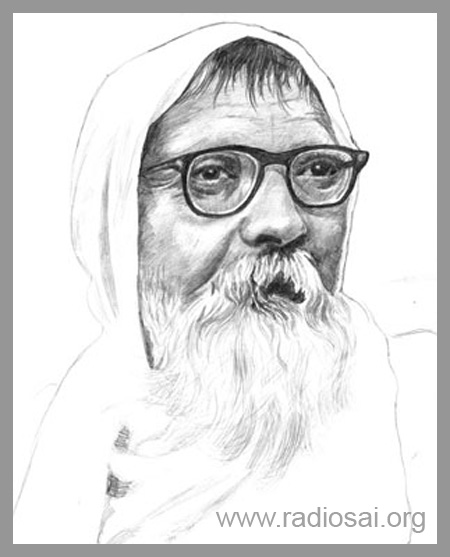 |
|
Acharya Vinoba Bhave (1895 - 1982) |
“Mother, you just don’t understand. Krishna Himself says in the Gita that one must not encourage laziness. I tried to tell you that, but you would not listen.” “Son, I am an illiterate old lady. I cannot read and so I do not know what is said in the Gita. I only know what my mother taught me.” “What did your mother teach you?” “She said, ‘If Narayana comes and asks for food, do not refuse but serve Him.’ That is what my mother taught me and I just did what she told me. Now tell me where have I gone wrong? What does your Gita say about serving Narayana?” |
After recalling this incident, Acharya Bhave makes a significant remark. He says, “I had read the Gita but did not know what was in it. My mother had not read the Gita but knew what was in it.”
That is what is happening too today. We have Gita scholars in the thousands and yet no one seems to be able to pin point the solutions we need for today’s problems. My point is that if we read Swami’s teachings carefully, it is actually possible to not only solve current problems but also avoid such problems in the first place.
And this is where the way Swami unravelled the Gita’s 700 slokas through His life and His innumerable discourses, etc., puts us in a very special situation. Swami has already given us what needs to be conveyed. All we have to do is to ‘package’ the solutions appropriately and deliver them to the various segments of society. That was what Radio Sai was supposed to do from day one, and indeed that is what we have been trying to do all along.
However, the time has come to do this job on a much bigger scale, on many different ‘wavelengths', and in a manner suitable for reaching out to a much wider audience. It is for meeting this new challenge that we are currently expanding our facilities and also reorganizing as well as regrouping ourselves. And this also is the reason why we are seeking volunteers who can spare some of their time and talent so that together we can do what needs to be done at this critical hour.
How We Can Team Up
In case you are confused by these grand sounding phrases, let me restate it to make the meaning clearer. In November 2001, we started off on a modest note, using one satellite radio channel, kindly made available to us by WorldSpace Corp. Over the years, we gradually expanded our satellite coverage, even as we got a toehold in internet technology. This gave us a global reach, and today we are able to offer live video coverage of all functions taking place in the Sai Kulwant Hall.
 |
| Two new video cameras procured by us for covering events in mandir and for other video related works. (Left) Panasonic AW HE120 WE is a pan/tilt/zoom camera that can be remotely operated |
However, considering the revolution taking place in the digital world, it is clear that we can, by taking advantage of the latest technology, not only achieve a much wider coverage but also make our offerings far more interesting. In a sense, we are already doing that. For example, some of the articles that appear in our website have audio and video links that enhance the appeal of the word content. But we clearly can do much better; and for that two critical steps are required, one on the delivery side and the other on content side. In actual practice, delivery comes after the content has been prepared; however, I put it the way I did to stress that improvements which need to be made on the delivery side are largely our responsibility.
On the other hand where content generation is concerned, the key ingredients are imagination and specialized media skills. Here, there is so much talent outside that we felt it would be nice if we could join hands. During my recent trip, many showed keenness to team up, and this article is the outcome of the enthusiasm I saw in many places.
At this point, I need to say something about the kind of content diversity we are seeking to achieve. I shall start with the bottom line which is that what we offer must not only be professionally produced programs but, more importantly, must appeal to as wide a section of the public as possible. Stated that way, it might seem to be a tall order, but the task is not all that superhuman; and the BBC illustrates what I mean.
Historically, the BBC started as a local cum global radio broadcaster (global because of colonial interests). After World War II, it added TV which, back then, for obvious technical reasons, could not be global. When the internet age came, BBC was ready and promptly took full advantage of it. Thus BBC today has totally and quite successfully reinvented itself to retain its global reach in a substantial measure by using a clever mix of all technologies i.e., regular analogue radio broadcasting, TV, internet and the web. It is the only service I know where for certain live programs, people phone-in all the way from San Francisco to Sydney – now that is some reach!
 |
Coming to brass tacks, this is what we roughly have in mind. Say we want to produce a video documentary on the water crisis facing humanity. The first thing we would do is to break this task into a series of sub-tasks, such as gathering raw data and information, aggregating the data, digesting the data and information, analysing the data and information and preparing a digest, preparing a story-line based on the analysis, identifying the steps needed to convert the story line into a video documentary, writing a preliminary script, arranging for file shots, graphics, animation, etc. I am sure you get the idea.
Once the framework for the task/project has been created, one must identify who would do what, who would supervise, co-ordinate, and so on. Simultaneously, we must have a system/structure that can handle the various sub-tasks and then assemble into a whole. This is somewhat like a car factory, where they have shops that make parts, a purchase department that buys parts not made in-house, and an assembly line where everything is put together, after which a finished car rolls out. This is the way all projects are done and ours is no exception. This is not rocket science but just plain old common sense! I would therefore not tax you with a long essay on this aspect.
Here is a ‘Google view’ of what we are looking at.
-
The aim is to spread the Message and reach out to as wide and diverse a public as possible, via various types of articles, and programs both audio and video, e-books, etc.
-
Radio Sai obviously would have to be the ‘axle,’ while the volunteers would provide support services according to their individual skills, expertise, interests, etc.
-
In practical terms, every project would be first factorized into a set of linked tasks, which then would be assigned to the members of that particular ‘task force.’ While a good many would be from Radio Sai, we hope others outside would be able to support us suitably, based on their individual expertise, experience, skill-set, etc.
-
It would be Radio Sai’s responsibility to put all the bits and pieces together to complete the project and come out with a ‘distributable media product.’
Hope all that is clear. I realise that I have said this sort of thing earlier. However, this time we wish to go beyond vague ideas to a practical framework where all participants know where exactly they fit into a particular task, what they would do, how their work fits into the overall scheme of things, who would coordinate, etc. In other words, this time we hope to tie up all the loose ends so that there is overall clarity on all sides. For this purpose, I would like to begin with some meetings on our side so that we are absolutely clear about how we would function from our side in respect of all our new responsibilities, an important one being co-ordinating the activities of the different members of a particular task force engaged in a particular task, like say the documentary on water crisis I referred to earlier.
As a part of this, we need to reach out to potential volunteers and ask them to fill out a suitably designed form, collect data, form a data base, identify people with different skills, group them into categories and so on, so that when a particular task is to be done, one could consult our database and check who among our volunteer brigade has the skill-set required and is free to take up the task to be done.
At this stage, I would like to toss an idea to readers who have project management experience. Please could you, a) design a form that would help us collect data about volunteers and the skill-set they possess, and b) prepare a report offering an ‘anatomy of a project'? If you think about it, from a logical and management point of view, tasks/projects as diverse as climbing the Everest to producing a movie, to putting man on the Moon or the Curiosity on Mars, all have a similar structure. What we need is a simple tutorial, applicable to our case. I am sure there must be many among you with this kind of expertise, maybe even with specific reference to media activities. If so, please would you step forward and help us prepare what I have specified? Even we could do with some tutorials!
For the sake of completeness, from our side let me say that the skill-sets we are looking for include the following:
|
That is a long list and I do hope it does not scare you! At this stage, I would like to add an important comment. Please do not imagine that we are merely looking for ‘sub contractors’ or a labour force. On the contrary, down the line we are looking to outsourcing entire projects, provided competent and self-contained teams are available (see items 11 and 12 above). Incidentally, even the BBC sometimes asks independent producers to do a documentary on its behalf. If we could do the same, then we could offer not only more programs but also greater diversity.
Perhaps, it would be useful at this point to give you some idea of how we would like to expand the scope of what we have been doing thus far. I shall illustrate by considering just one example, namely the human body.
A Sample Project Idea
Now on the face of it, many might wonder what the human body has to do with spirituality. Here are my thoughts.
-
To start with, most people are unaware how exceptional the human body is. I would have more comments on that shortly but how many are aware that the human body is a temple built by God Himself for Him to occupy? Swami has clearly stated that the Heart is His permanent home. He has also wryly commented on the fact that humans make a huge fuss about going to temples built by man, even while they ignore the temple God has built for Himself.
The point here is that we do not treat the body as a sacred temple; on the other hand we don’t think twice about polluting the body with tobacco smoke, alcohol, drugs, and what not. Even if people are not given to substance abuse, many, most casually and quite thoughtlessly indulge in eating excessive amount of fast food, and consuming a huge amount of soft drinks which do little good. Then there is addiction to TV, which not only harms the body but also contaminates the mind, among other things promoting unwanted desires, violent feelings, etc.
-
We take the human body so much for granted that we scarcely note its uniqueness. Take a minute off to watch an Olympic gymnast or an expert Bharata Natyam dancer or, for that matter, a champion tennis player in action. You would then appreciate how amazingly flexible the human body is; no other creature on earth has this flexibility.

-
Focus now on the fingers. We take them so much for granted that we hardly realise how many things humans are able to do with their fingers. But for them, we would not have piano and violin players, sculptors, painters, surgeons, carpenters, and spin bowlers (if you are a cricket fan, you would know what I am talking about!). By the way, without fingers we would not be able to use laptops, do texting and so on. The great Newton was so impressed by the thumb that he once exclaimed, “The thumb alone is enough to prove that God exists!” Just try to open the cap of a bottle without using your thumb and you would know what I am talking about.
-
Next consider our tongue and vocal chords. We are the only species that can not only speak but also sing. The range and vibrancy of the human voice is just astonishing.
-
Consider now sleep. World over, people are awake during day and sleep at night. Do we ever wonder why this is so? What happens is that when darkness sets in, the body automatically produces a chemical that induces sleep. This fact is correlated to the fact that our eyes have maximum sensitivity for yellow; and that is related to the fact that the spectrum of sunlight peaks in the yellow region. In other words, Nature has designed humans to be daytime creatures as opposed to some others that are nocturnal.
-
Let me turn to yet another aspect of human body, a feature which humans share with other creatures. Somewhere within us there is a bio-clock. No one has seen it but it exists nevertheless. Thus it is that at the right age milk teeth appear, and then drop off a few years later to be replaced by permanent teeth. As for hair, it remains black up a certain age and starts to go grey beyond a certain age. Who is keeping time and telling the hair, “Time go grey! Therefore, change!”
There is another topic which, in fact, is critically important; and that relates to ceiling on desires. This topic can be developed over several layers, ranging from the purely spiritual to a very practical one, namely, that the present consumerist economy is not merely a volcano (as Swami Vivekananda once described materialism) but also unsustainable and most destructive to the planetary eco-system. This too offers a lot of scope for development.
I should not omit to mention that programs do not necessarily have to be dry, boring and turgid, which is what some people imagine spirituality to be. Every year, on the morning of Ashadi Ekadasi day (which comes just a few days before Gurupoornima), devotees from Mumbai put up a great show, that also has a lot of humour. I can think of a nice radio drama featuring Lord Narayana and His great devotee Narada always wandering across the three worlds, singing the Lord’s Glory. We can have the Lord and His devotee engaged in a conversation using mobile phones, with Narada sending tweets and photos snapped by his phone, and so on. I am sure the kids would enjoy it but in the midst of all that, we can manage to squeeze in valuable spiritual lessons.
I think I have said enough to make my point on what needs to be done and the way it ought to be done, including in terms of planning and execution. I shall add just one more point. In making this point, I do not wish to appear as if I am promoting something I authored but I think it is pertinent to draw attention to Vol. 2 of my two-volume presentation of the Ramayana bearing the title Journey into Valmiki’s Ramayana. While Vol. 1 is Valmiki retold, Vol. 2 is all about how and why the Ramayana is still relevant today. And in that volume, you can find many examples of the type of messaging I am currently discussing. Some of these are presented as ‘side stories,’ examples being how oil tanker traffic pollutes the oceans, how low-frequency sonar affects marine life, the danger of overfishing, and the power of coherence; there are many others as well.
Everything is 'Him'possible
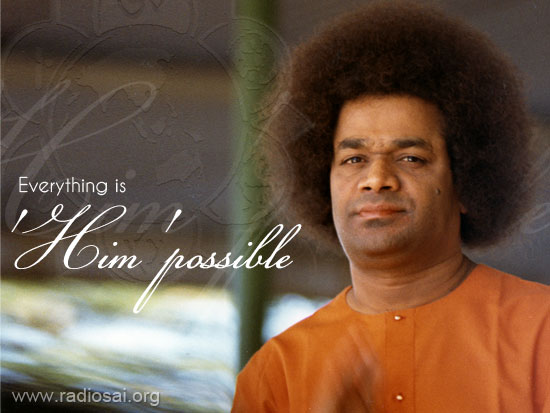 |
I am sure many of you might be feeling that I am trying to do too much and should scale down my plans. I would agree with you if I thought I was doing it. On the other hand, if I gave up the doership feeling and just worked hard, then Swami would take it over and make things happen better than we ever imagined. I can assure you that when Swami becomes involved, the famous Sai Sankalpa goes into operation. Once that happens, no force on earth can stop it.
Some might wonder: “Will Swami really take over as is being said above?” He will without fail, provided we do our bit with the firm faith and belief that He is the doer and not us. And here I am speaking from actual personal experience, not once but several times. And by the way, many are the times Swami has told His students, “Always aim high. Low aim is a crime!”
So let us not have inhibitions in setting targets. All we have to do is to shed the doership feeling, and engage in His work, taking His name every step of the way. Back in the old days when people travelled long distances by bus, there used to be a bus company in America called Greyhound. Their slogan was: “Go Greyhound and leave the driving to us!” In our work, all we have to do is to put God in the driver’s seat!
So dear sisters, brothers, young people, one and all! This time we are very earnest and prepared; we have been given this as a mandate; and above all, Swami has declared that He who spreads His Message is very dear to Him (Gita, Chapter 18, sloka 68). That, I hope and trust, would make you take my present appeal more seriously!
CLOSING REMARKS
I would like to end by drawing attention to the fact that the situation faced today by humanity is quite different from what has been faced any time earlier in human history. There are several reasons for my saying so, some of which I list belo
1. Take a look at the world population. When Christ was born, the population was about 200 million. It took up to 1804 to cross the 1 billion mark. In a little over a hundred years, the population climbed to 2 billion. Today, the population is about 6.8 billion, and continues to grow. 2. It is not merely that the population is growing. The per capita consumption of both energy and water has increased enormously. The caveman’s life was simple, and his energy need was restricted to food and keeping warm. As for water, all he needed was water to drink, wash himself and a few simple things like that. |
Today, the per-capita requirements have shot up enormously because of industrial development. An individual still drinks the same amount of water per day as his caveman ancestor did, but in terms of consumption, many other requirements have come up. A modern household has all sorts of gadgets consuming electricity; generation of electricity uses water and so does the manufacture of products, be it cell phones, digital cameras, TV sets, printers, cars, fridge, air conditioner, you name it.
In addition, public facilities like hotels, airports, sports stadia, shopping malls, golf courses, etc., all use large quantities of water. So does construction. Few realise how much water is used when concrete structures like roads, flyovers, runways, skyscrapers, etc., are built. Meanwhile, a huge quantity of water is being wasted; and a lot is also lost through sheer pollution. All things taken together, water availability is increasingly becoming a matter of serious concern.
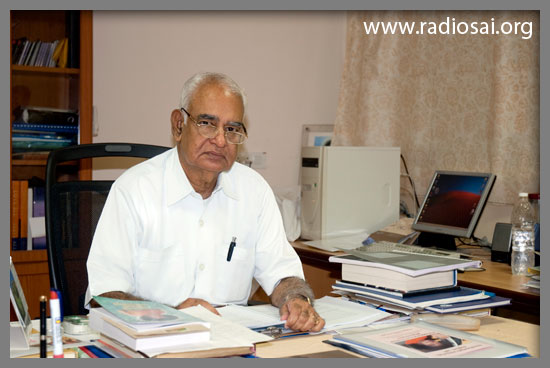 |
|
| Prof. G. Venkataraman at his desk at Radio Sai |
3. Then there is the alarming rise in carbon dioxide content of the atmosphere, and the pollution of the oceans, yes the oceans. You would think that oceans are too huge to be seriously polluted. If you did, then it means you have grossly underestimated human capacity to mess up things on a large scale!
4. A hundred years ago, people everywhere lived mostly in rural areas. Presently that has changed. Very recently, it was announced that about 50% of the population lives in urban areas. In India, urban area means enormous overcrowding with little lung space, schools without playing grounds, and so on. And urban regions guzzle energy in all sorts of ways. Above all, crowding also creates health, emotional and security problems.
5. With so many people on planet and endless consumerism as the mantra of life, competition has become severe. Intense competition not only leads to winners and losers but also creates a situation in which winners aggressively seek to retain their status. This tension plays out in various ways, all the way from the family to society as a whole; and thus it is that today there is violence of varying sorts, sometimes extreme, all the way from Myanmar to Mexico. |
Some of you may complain that I am injecting too much negativity. So it might seem to all who do not have to face problems. The sad reality is that all around us there are huge problems.
Right now, a huge chunk of the state of Andhra Pradesh has been engulfed by agitations of all sorts that have paralyzed life in a substantial measure. While our Ashram remains peaceful, life in Puttaparthi village has on and off shut down between 8 AM and 7 PM or so, causing a lot of difficulty for shop keepers, and the poor street vendors in the village.
The point I am making is that humanity as a whole has been caught up in all kinds of problems, almost all of which arise from some infection or the other of the mind. In a book titled Thought as a System, the author, a famous physicist named David Bohm, says that infinitely clever though the mind is, it can never solve the problems it creates. That is because the moment it starts thinking about how to solve a problem, it creates more problems. In the world of spirituality, this is old hat. Swami has spoken at length on maalinyam, the muck that collects when the mind is allowed to roam freely and without any restraint whatsoever. And that precisely is what is happening these days, thanks to an unholy alliance between the market and the media which knows how to play on our desires and enslave us in body and mind.
It is pertinent to note here that when it comes to solving problems not connected with the mind, the latter can be incredibly brilliant. Thus it is that small pox which used to kill in millions has now been totally wiped out. Way back in 1958 when I had to leave India for the first time and go to Canada, I had to get a special small pox vaccination. Back then, when you entered a Western country, the first thing they would check was the health certificate, even before they take a look at your passport. And think of the Curiosity Rover sitting on Mars, the detection of the Higgs Boson and so on. All of these are due to the remarkable power of the mind. But when the mind is infected by desire, it not only ruins that person but can potentially cause extensive havoc.
Remember, it was one Hitler whose actions ultimately led to the death of about fifty million people, besides ushering in the era of nuclear weapons. Desire is a mortal foe warned Krishna, and Swami has endlessly repeated the same message. That said, in this Kali Age, people choose to remain blind and deaf, because it suits them.
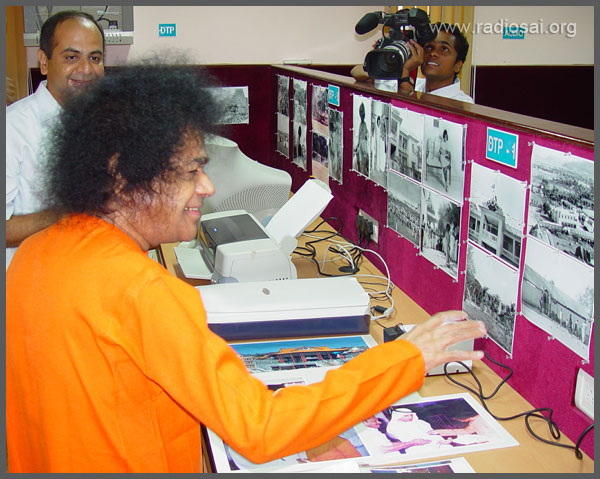 |
|
| Swami at the Radio Sai Studio at the time of Inauguration, Aug 29, 2002 |
I do hope you would take a few minutes off to seriously introspect on what is happening all round us. If you do, then it should be abundantly clear that we have no option but to go back to value-based life and society.
Many continue to believe in power, might and violence. A well-known politician of an earlier era belligerently declared, “Extremism in the defence of liberty is no vice.” I do not know whose liberty that person was talking about. If he could make claims like that, then others could equally claim that extremism is justified to protect their brand of religion, racism, politics, and so on. The very thought of extremism goes against civilized society. As the former Pope Benedict eloquently put it, “to be human, we must first exhibit humanness.”
That was the Avatar’s Message too, and He talked about it endlessly, in so many different ways and on so many different occasions. His message is timely and as well as timeless. Just the other day, all of us here sat down to watch the video of His visit to the studio in order to bless it. He talked extensively about His Discourses in the context of our work. He wanted us to do a good job and grow; and that is what we are now seeking to do, since the Message has become more important than ever before.
ONE FINAL AND IMPORTANT WORD
This is a personal note that I feel compelled to add. Every day as I come to work, I see many people engaged in doing their work. All of them are simple and ordinary folk from our village or the neighbouring one. Some would be sweeping, others would be engaged in gardening, yet others delivering bottles of drinking water, and so on. Hardly anyone notices them but they go on silently doing their work. The important point that all these people do their work sincerely – that is absolutely amazing to me.
In a sense, they are like ants that are always busy. But there is a critical difference between ants and these people which is that while ants are hardwired to do what they do, humans are not. And yet these people are busy; how come?
People may say, “What is so great or surprising about all this? They are paid to do work, are they not?” That certainly is true; but you know what? If you look around, there are people in this country who earn ten, fifty and even hundred times what these people receive. Do they work as sincerely? Sadly, not many do. As a matter of fact, some not merely dodge work but actually use their time to see how to make a fast buck.
I drew attention to simple people quietly doing their work sincerely because that is what good Karma is all about. We are all aware of Karma Yoga; what we do not appreciate is that engaging in good Karma is the first step towards Karma Yoga. There are at least a couple of billion people the world over whom on their own, do their work sincerely and without the need for any supervision.
In the Gita the Lord declares that He incarnates to help restore Dharma. Swami has explained the nuances. Swami says God is Dharma and therefore Dharma per se can never become weak. What weakens is the adherence to Dharma by humans; and this weakening begins with people failing to do their duty or Karma. It is for helping humans to adhere to Dharma that God comes down in human form. And the first thing Avatars do is to work as if they are doing their duty. Krishna made it absolutely clear that He had no duties to perform; yet He acted as if He was performing duty in order to set an example to humans. Swami too has reiterated that. In fact Swami has gone much further by giving us detailed advice about what we ought to do, when, how, etc. And it all starts with duty, and our duty in Radio Sai is to spread the teachings of the Lord far and wide.
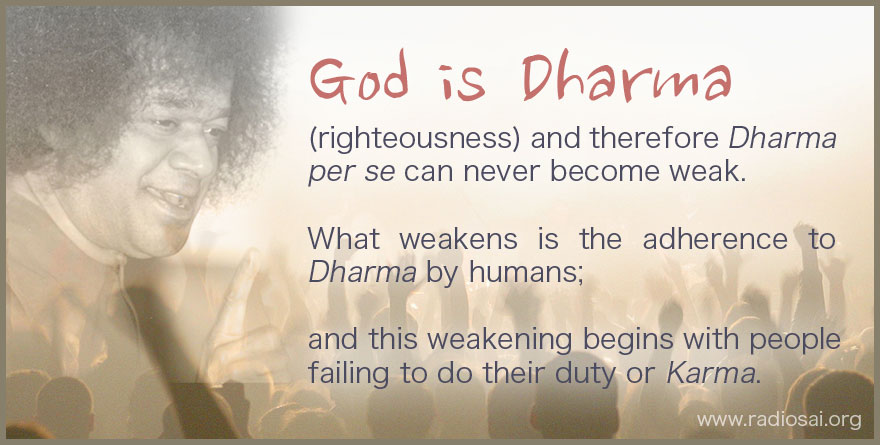 |
I do not know if it was a coincidence but just a short while ago, I heard an interview on BBC with a businessman from Karachi. This man was being targeted by criminals (sadly, Karachi which I knew as a wonderful city in the forties is now dominated by criminal elements). He was regularly being asked to pay protection money which he did for a while. Now he was refusing to, even though the gangsters knew all about where he lived, the schools to which his children go and all that. This is what I heard:
BBC: You have now refused to pay it seems.
Karachi Businessman (KBM): Yes I have.
BBC: But they still threaten you, do they not?
Meanwhile, the sound of a phone ringing is heard.
BBC: We hear your phone ringing. Is it from the extortionist?
KBM: Yes it is.
BBC: You intend to ignore the call?
KBM: Yes.
BBC: Are you not scared they might harm you?
KBM: They know where I live and they could do bad things – that is definitely possible.
BBC: Why don’t you go away to another country? Many in Karachi seem to have done that.
KBM: That is true, many have left but I am not going to.
BBC: Why?
KBM: Why should I go away? This is my country and I want to live here. More and more of us have to do the same and come together. That is the only way to fight these thugs. I have money and can go away. But what about the poor people here? Where can they go? I feel it is my duty to stay and fight these evil people, especially for the sake of these poor people.
I was stunned as I heard this conversation. I was typing while the radio was going on in the background. I was sort of half aware of what was coming from the radio but when this conversation started, I stopped typing and listened carefully. I was amazed because this was precisely what I was trying to say, namely that all of us must come together and spread the Message so that good people everywhere feel that God cares for them.
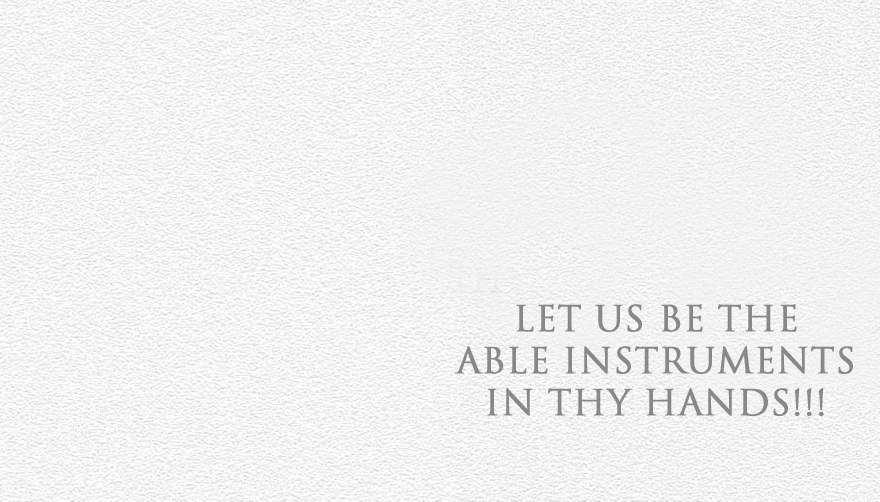 |
In other words, we must become the pencil, nay the broad brush that connects the dots. Once people feel that Swami is with them, then they would feel more confident. Once they begin to feel that way, they would start thinking positively and start doing their bit. That is how a ground swell builds up. And once the wave of Dharma swells up to the proportions of a tide, there would be a sure reversal.
Fortune is like a pendulum. Adharma can’t always keep winning, not if we stop being a fractured as well as a totally impotent silent majority and allow ourselves to be overwhelmed by a minority of strong musclemen, with or without big megaphones. In his own way, that was the message the Karachi businessman also was trying to give to BBC.
I sure must have more than tried your patience! So, offering apologies, let me stop here and thank you in anticipation for your co-operation.
Samastha lokaa sukhino bhavantu!
Sarve janaa sukhino bhavantu!
Jai Sai Ram.
What are your impressions about this article? Please share your feedback by writing to h2h@radiosai.org. Do not forget to mention your name and country.
Interested volunteers can write to globalteam@radiosai.org






